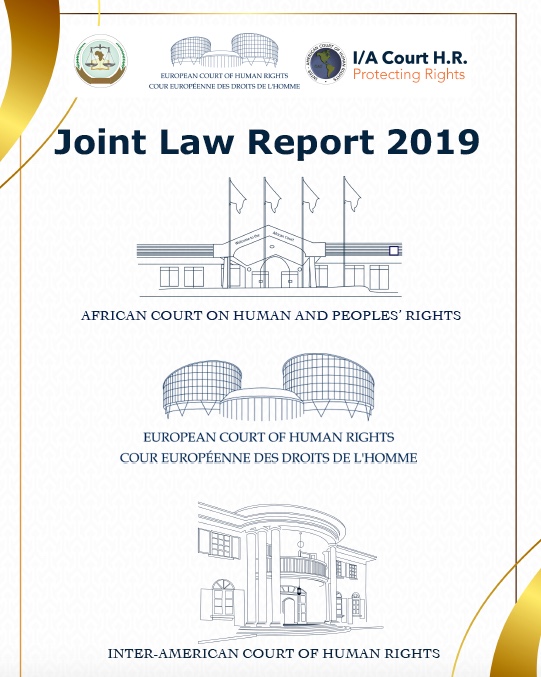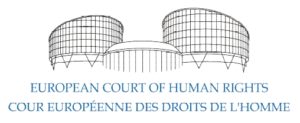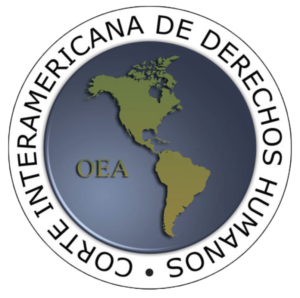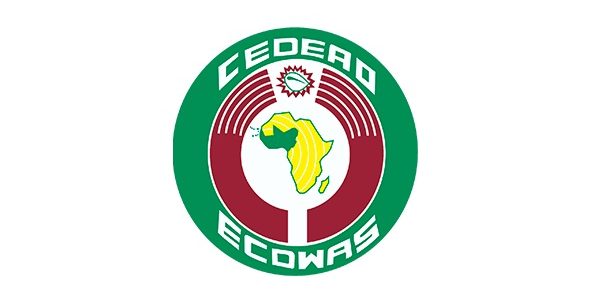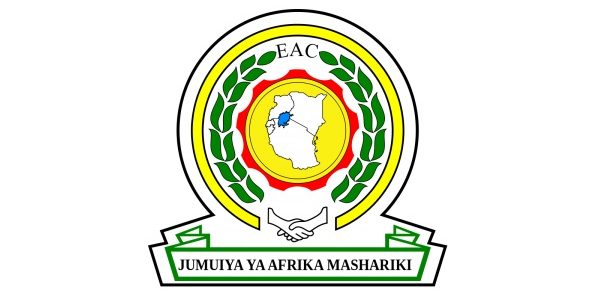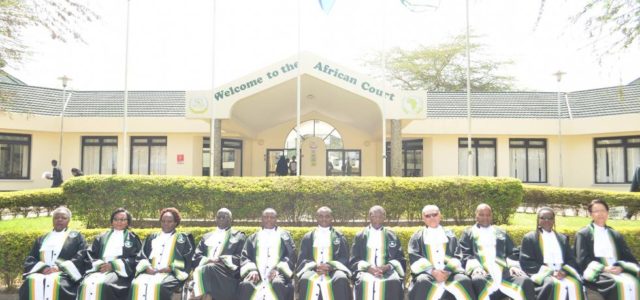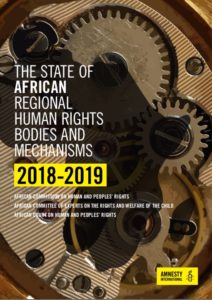My second post for the Monitor is also the kick-off of a special series we have put together for the new year on the use of other sources of law among five prominent regional courts: African Court, ECtHR, IACtHR, EAC Court of Justice, and ECOWAS Court. This first post in the series starts with the focus of the Monitor: the work of the African Court. In the coming months, posts will follow on the other courts outlining their jurisdiction, highlighting their important cases, as well as any cross-references between their work and the jurisprudence of the African Court. We hope you enjoy! Misha
Articles 3(1) and 7 of the Protocol to the African Charter on Human and Peoples’ Rights on the Establishment of an African Court on Human and Peoples’ Rights (Protocol) allow the African Court to do two important things:
- Article 3(1) ensures that the African Court has jurisdiction over “the Charter, [the] Protocol and any other relevant Human Rights instrument ratified by the States concerned.” [emphasis added]
- Article 7 allows the African Court to use “the Charter and any other relevant human rights instruments ratified by the States concerned” as sources of law. [emphasis added]
These two articles have had a significant impact on the jurisprudence of the African Court. When one looks at the jurisprudence of the African Court it becomes clear that the it has made good use of these provisions. There are an abundance of cases in which the African Court draws on other relevant human rights instruments as sources of law, and even a few cases in which it has found a violation of another human rights instrument to which the Respondent State is a party (see for example Norbert Zongo et al. below).
The African Court uses both sources from within the continent—the treaties and practice of regional economic community (REC) Courts—and further a field, like the IACtHR and the ECtHR. The overlap between the African Court and the REC Courts is interesting because the latter were establishmed to deal with different types of cases, namely economic matters rather than function as human rights courts as such, although the mandate of the ECOWAS Court has changed over time as will be demonstrated in the months to come.
The work of these ‘other’ courts will be dealt with in the subsequent posts of this special blog series, while this particular blog post will focus on how the African Court makes use of articles 3(1) and 7 of the Protocol. In the following section the general trend will be discussed through the examination of three leading cases: Norbert Zongo et al., Alex Thomas, and Peter Joseph Chacha.
The Practice of the Court
When one studies the jurisprudence of the African Court it becomes clear that in recent years it has become increasingly self-referential as it builds its own body of jurisprudence. However, many of the pivotal cases that the African Court now references drew strongly on other sources of law such as the ICCPR, the ECHR, and/or the IACHR. Three of the leading cases of the African Court, and how they used ‘other human rights instruments’ and the work of other human rights institutions, will be discussed here. These three cases were chosen because they have come to be some of the most influential in the African Court’s subsequent jurisprudence, and in each the African Court relied on other sources of law in its decision-making process. Therefore, it is important to understand how these other sources were used in order to better understand the precedent that was set in each case.
Norbert Zongo et al.
The first is the case of the Beneficiaries of the Late Norbert Zongo, Aboulaye Nikiema Alias Ablasse, Ernest Zongo and Blaise Ilboudo & The Burkinabè Movement on Human and Peoples’ Rights v Burkina Faso (Norbert Zongo et al.). Up until late 2018, the case of Norbert Zongo et al. was by far the most cited case in the African Court’s jurisprudence, with Peter Joseph Chacha and Alex Thomas trailing behind with only slightly fewer references to them.
In the case of Nobert Zongo et al., the Applicants alleged violations of not only the Charter, but also the Revised ECOWAS Treaty, ICCPR, and the UDHR [para. 9-11]. Ultimately, the African Court found that Burkina Faso violated article 7 (right to a fair trial), article 1 (obligation to adopt measures, other than legislative measures), as well as a violation of article 9(2) of the Charter and article 66(2) of the Revised ECOWAS Treaty [para. 203]. In deciding the case, the African Court made a number of important decisions.
First, the African Court reaffirmed that it had material jurisdiction over other human rights instruments, in accordance with article 3(1) of the Protocol, with regard to the alleged violations of the ICCPR and Revised ECOWAS Treaty [para. 48-49].
Second, the African Court used the work of the ECtHR as a link between various legal families. Specifically, the African Court referenced the work of the ECtHR “in a matter concerning France which belongs to the same legal family as Burkina Faso” [para. 70] in order to determine whether domestic remedies had been exhausted. No reference was made to the IACtHR in the case.
Third, the African Court drew connections between various legal instruments. For example, connections were drawn between article 7(1) of the Charter and articles 2(3) and 14 ICCPR, as well as article 8 UDHR [para. 114]. In addition, the African Court created a hierarchy by stating that it would consider an alleged violation of article 7 of the Charter first, “and then, if need be, in regard to the provisions of other international instruments invoked by the parties.” [para. 118]. Therefore, despite drawing on these other human rights instruments, the African Court prioritised the Charter as the main source of law. As a result, since the African Court found a violation of article 7, it did not go into whether there was also a violation of articles 2(3) and 14 ICCPR or article 8 UDHR in this particular case [para. 157]. The same was true for the alleged violation of the right to equality in article 3 of the Charter and article 14(1) ICCPR [para. 170], and the alleged violation of the right to receive and disseminate information and freedom of expression in articles 9(1) and (2) of the Charter, article 19(2) ICCPR, and article 66(2)(c) of the Revised ECOWAS Treaty [para. 178]. The African Court did, however, find that article 9 of the Charter and article 66(2)(c) of the Revised ECOWAS Treaty “should be read jointly.” [para. 180, also see 187].
But it wasn’t just the African Court that made reference to these other sources, the Respondent, Burkina Faso, in this case also used the ECtHR’s jurisprudence to justify why the case had taken longer to go through the domestic legal system and why that did not constitute an undue prolongation of the remedies [para. 75-76 and 80]. The only party to invoke the work of an African institution were the Applicants, who invoked the work of the African Commission on article 7 [para. 141].
In the end, the African Court unanimously found that Burkina Faso had violated articles 1 and 7 of the Charter. With a majority of five to four, it also found that Burkina Faso violated article 9(2) of the Charter, “read together with article 66(2)(c) of the Revised ECOWAS Treaty.” [para. 203(1)] (The dissenting opinion was on the standard of evidence required, not on the sources of law).
Alex Thomas
The case of Alex Thomas v Tanzania is not only important from the perspective of the development of the right to fair trial in the African human rights system, but it is also important in the context of the African Court using other sources of law. Perhaps more so than almost any other case, the judges in Alex Thomas relied heavily on other human rights instruments, and the interpretation thereof by other human rights institutions, in order to further expound on what article 7 and the right to a fair trial entails.
In this case, the Applicant, Mr Thomas, alleged a violation of articles 1, 3, 5, 6, 7(1) and 9(1) of the Charter [para. 19]. The African Court discussed various aspects of article 7: the right to be heard and to defend oneself [para. 81-99]; the right to be tried within a reasonable time [para. 100-110]; the right to legal aid [para. 111-124]; the allegation of manifest errors during trial [para. 125-131]; among others. In deciding the case, the African Court relied on the work of the CCPR, ECtHR, IACtHR, and African Commission, as well as its own jurisprudence.
First, on procedural matters, the African Court referenced its power to draw on external sources [para. 88], and then went on to use them to interpret its jurisdiction. On the issue of not being an appellate court, yet still having jurisdiction over “manifest errors at trial”, the African Court drew on its own case law in Ernest Francis Mtingwi v Malawi, the work of the ECtHR in Baumann v Austria, Gracía Ruiz v Spain, Perez v France, and Dulaurans v France, the African Commission decision Priscilla Njeri Echaria v. Kenya, as well as the IACommHR case Santiago Marzioni v Argentina[para. 130, footnote 28].
Second, in interpreting the content of the various rights invoked, the African Court reiterated its procedural powers and proceeded to draw heavily on external sources:
- Article 7(1)(c): In the merits section, the African Court reiterated its power to interpret article 7(1)(c) of the Charter “in light of the provisions” of article 14 the ICCPR, as Tanzania was a party to that treaty [para. 88]. The African Court then went on to discuss the protections provided in article 14 ICCPR [para. 90] and applied it to the case [para. 91-94, also see para. 114]. The African Court added that it was “fortified in its reasoning by the decisions of the African Commission[, the] European Court of Human Rights and the Inter-American Court of Human Rights, which are courts of similar jurisdiction.” [para. 95 and 116]. In its interpretation, African Court used the African Commission decision Advocats Sans Frontières v Burundi [para. 96 and 117], as well as the various declarations, principles, and guidelines of the African Commission [para. 121, also see 144]. The African Court also made reference to the ECtHR cases Colozza v. Italy [para. 97], Benham v UK, Quaranta v Switzerland, Zdravka Stanev v Bulgaria, Talat Tunç v Turkey, Prežec v Croatia, Biba v Greece [para. 118, footnote 20], and Salduz v Turkey [para. 119], as well as the IACtHR case Suárez Rosero v. Ecuador [para. 98], and the CCPR communication Anthony Currie v Jamaica [para. 120].
- Article 7(1)(d): The African Court did much the same with the interpretation of article 7(1)(d) of the Charter [para. 102], which was interpreted in light of the work of the African Commission in Haregewoin Gebre-Sellaise & IHRAD v. Ethiopia and Odjouoriby Cossi Paul v. Benin [para. 103]. The African Court also drew on article 8(1) of the Charter and the cases of Suárez Rosero v. Ecuador, Ximenes-Lopes v. Brazil, Ituango Massacres v. Colombia, and Baldeón-García v. Peru before the IACtHR [para. 104, footnote 17], as well as the work of the ECtHR in Ruiz-Mateos v. Spain [para. 104, footnote 18].
- Article 1: As to the “overarching applicability of Article 1 of the Charter” the Court invoked its own jurisprudence from Nobert Zongo et al., and the work of the African Commission in Sir Dawda K. Jawara v. the Gambia [para. 136]. When it came to the decision that the delay in proceedings did not constitute cruel, inhuman and degrading punishment and treatment, the African Court did so taking into consideration the work of the CCPR on the matter [para. 146]. It also made reference to the ECtHR cases Price v UK, Valašinas v Lithuania, and Pretty v UK [para. 146, footnote 31], as well as the CCPR communication of Earl Pratt and Ivan Morgan v. Jamaica (1986) and (1987) [footnote 32].
- Remedies: The last element of the case related to Mr Thomas’ request to be released from prison [para. 155-159]. The African Court rejected this plea [para. 157], and based its decision primarily on the IACtHR case Loayza-Tamayo v Peru, and the requirements of “very specific and/or compelling circumstances” [para. 157, footnote 33]. Instead, the African Court offered re-opening the case as an alternative remedy [para. 158], drawing on the work of the ECtHR in Stoyanov v. Bulgaria [para. 158, footnote 34].
The Applicant, Mr Thomas, in contrast, drew on the previous work on the African Court and invoked the jurisprudence developed in Frank David Omary and Others v. Tanzania and Peter Joseph Chacha [para. 44]. It was in these two cases that the African Court decided it had jurisdiction ratione materiae [para. 45]: The Applicant need only specify a human rights violation, as contained in the Charter or other human rights instrument, and not necessarily identify which specific rights these alleged violations correlate to in the instrument itself [also see para. 51-52]. In addition to the African Court’s own case law, it was also “persuaded by the reasoning of the African Commission in Southern African Human Rights NGO Network v. Tanzania” on the need to only exhaust ordinary domestic remedies [para.64].
The Respondent, Tanzania, also invoked other sources, and reached beyond the continent in support of its position. Tanzania invoked “international human rights standards” to support their arguement that Mr Thomas had not filed his application within a reasonable time [para. 66]. In their rebuttal, the Applicant relied on the work of the African Commission to refute this point [para. 72]. The African Court in turn relied on its own jurisprudence in Nobert Zongo et al. and its precedent on reasonable time [para. 73].
In the end, the African Court exercised the full extent of its powers under articles 3(1) and 7 of the Protocol and found that Tanzania had violated articles 1, 7(1)(a), (c) and (d) of the Charter, and article 14(3)(d) of the ICCPR [para. 161]. Therefore, Tanzania had “failed to comply with its obligations under the Charter and the ICCPR” [para. 124]. Therefore showing that the African Court would not limit itself to only using other human rights instruments as a tool for interpretation, but could also find violations of such other instruments.
Peter Joseph Chacha
The case of Peter Joseph Chacha v. Tanzania is perhaps the odd one out of three cases discussed here. The African Court issued a ruling on admissibility, finding the application inadmissible, unlike the other two cases discussed above, which were decided on the merits. Nevertheless, the case of Mr Chacha set an important precedent when it comes to Applicants not having to reference specific provisions of the Charter in order to claim a violation thereof, as well as on the exhaustion of domestic remedies. While the African Court did not see the initial lack of clarity on which Charter rights the Applicant was invoking as a ground to dismiss the claim, his lack of exhaustion of domestic remedies was [para. 155].
On the issue of invoking Charter rigths, Mr Chacha made reference to a violation of Tanzanian law, and not the Charter as such in his initial application. In subsequent submissions, Mr Chacha alleged that his rights contained in articles 3, 5, 6, 7(1), 14, and 26 of the African Charter were violated [para. 67]. In deciding the case, the African Court relied on a number of external sources. But it was not only the African Court that did so. For example, both Tanzania and Mr Chacha discussed the Rules of Procedure and Statute of the IACtHR [para. 79], and Tanzania also made reference to a case decided by the Indian Supreme Court to support its position on the use of expert witnesses [para. 73-4]. In establishing the important precedent on whether or not Mr Chacha had to reference a specific article in the Charter, the African Court discussed the preliminary objection to its jurisdiction to hear the case drawing on African and other sources.
First, the African Court references its own case law in the consolidated cases of Tanganyika Law Society et al. and Reverend Mtikila v Tanzania. Here the African Court reiterated its rejection of the idea that it does not have jurisdiction ratione materiaebecause the claim is based only on domestic law. The African Court instead argued that it would find equivalent articles in the Charter, as it had done in the previous case [para. 113]. In making this argument the African Court also drew on the work of the African Commission in Southern African Human Rights NGO Network and Others v Tanzania. The African Court used this communication to support the argument that the Applicant need only show that there is a prima facie violation, and that “it is not mandatory for the Complainant to mention specific provisions of the African Charter that have been violated” [para. 51].
Second, the African Court not only looked to its own work and that of its compatriot, the African Commission, it also looked further afield and drew on a number of cases before the ECtHR like Guerra and Others v Italy, Scoppola v Italy (No. 2), and Previti v Italy [para. 120, footnote 3], as well as the jurisprudence of the IACtHR in Hilaire v Trinidad and Tobago [para. 121]. The case law of the ECtHR and the IACtHR supported the idea that there was no need for specific reference to be made to articles in the relevant human rights instrument in order to bring a case before these human rights courts.
When it came to the exhaustion of domestic remedies, much the same was true. Here again the African Court drew on its own jurisprudence in the case of Urban Mkandawire v Malawi [para. 142], and that of the African Commission inKenyan Section of the ICJ, Law Society of Kenya and Kituo Cha Sheria v Kenya and Anuak Justice Council v Ethiopia [para. 143 and 144]. Although, here it did not draw on cases beyond the continent.
In the end, in a six to four split (the Tanzanian judge recused himself), the African Court found that the application was inadmissible because the Applicant, Mr Chacha, had not exhausted domestic remedies [para. 159].
Conclusions
These three cases have become pivotal in the case law of the African Court. Each of them in turn built on important case law from other regional and international human rights institutions and instruments, and used these sources to further develop the meaning and interpretation of the African Charter. While the use of articles 3(1) and 7 of the Protocol, which allows the African Court to draw on these external sources, has declined in recent years, the traces of the effect of other human rights instruments on the earlier jurisprudence of the African Court are clear. Therefore, while many of the newer cases of the African Court draw heavily on the cases of Norbert Zongo et al., Alex Thomas, and Peter Joseph Chahca, these seemingly internal references are tied to a wider body of human rights jurisprudence being developed in other institutions on the continent and around the world.
The rest of this special series is dedicated to a number of these other human rights institutions. The focus will be on how these other courts interpret their legal instruments, how they interact with the African Charter as an instrument (if at all), as well as whether they make reference to the work of the African Court as an institution. So keep an eye out for the contributions on the EAC Court, the ECOWAS Court, the IACtHR, and the ECtHR!
